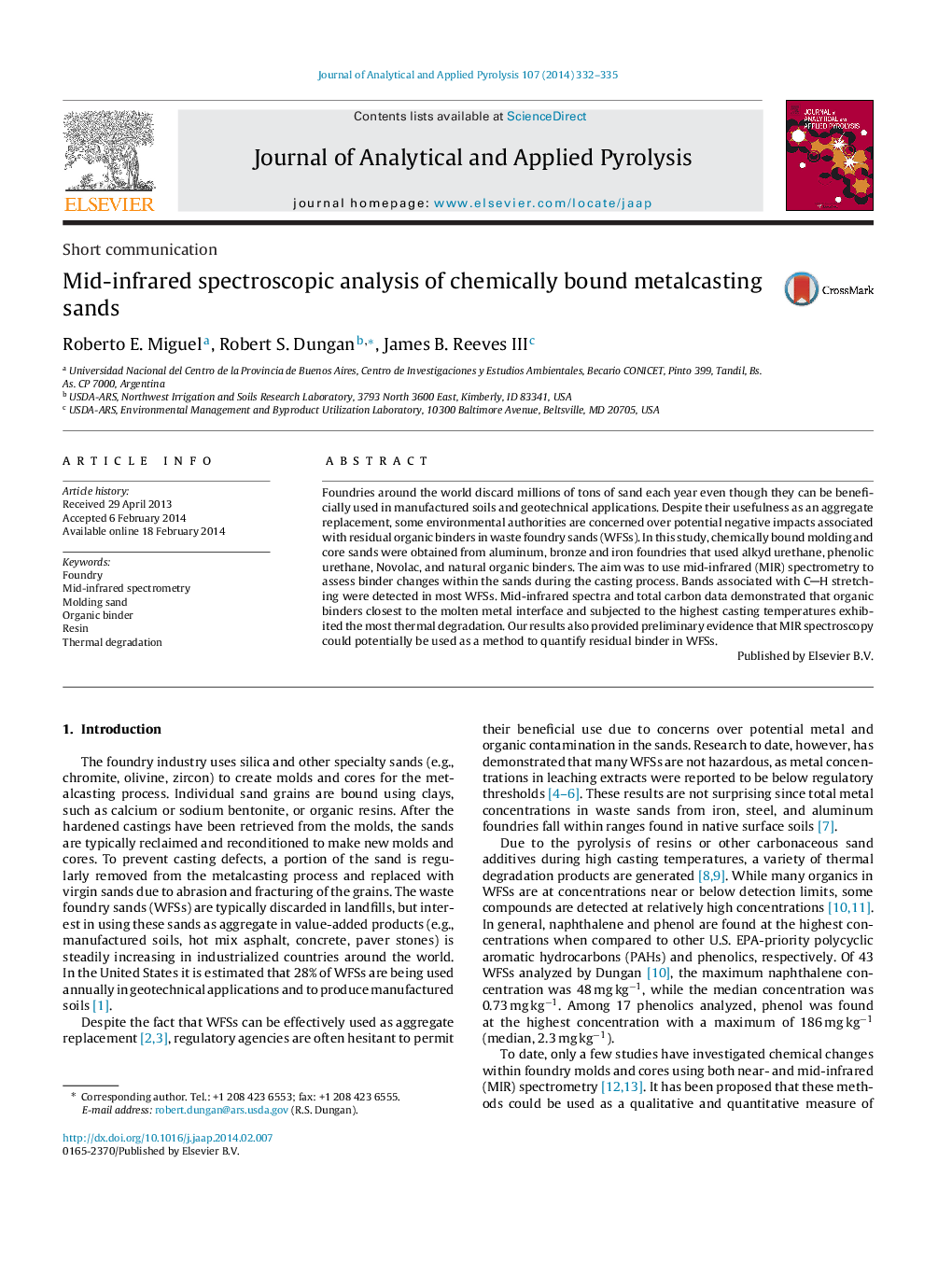| Article ID | Journal | Published Year | Pages | File Type |
|---|---|---|---|---|
| 1198320 | Journal of Analytical and Applied Pyrolysis | 2014 | 4 Pages |
•Foundries discard millions of tons of chemically bound molding sands annually.•Mid-infrared spectroscopy was used to assess binder changes during metal casting.•Binders closest to the metal interface exhibited high levels of thermal degradation.•Carbon data demonstrated that high temperature castings promote the most degradation.•It may be possible to use MIR spectroscopy to identify sands with less residual binder.
Foundries around the world discard millions of tons of sand each year even though they can be beneficially used in manufactured soils and geotechnical applications. Despite their usefulness as an aggregate replacement, some environmental authorities are concerned over potential negative impacts associated with residual organic binders in waste foundry sands (WFSs). In this study, chemically bound molding and core sands were obtained from aluminum, bronze and iron foundries that used alkyd urethane, phenolic urethane, Novolac, and natural organic binders. The aim was to use mid-infrared (MIR) spectrometry to assess binder changes within the sands during the casting process. Bands associated with CH stretching were detected in most WFSs. Mid-infrared spectra and total carbon data demonstrated that organic binders closest to the molten metal interface and subjected to the highest casting temperatures exhibited the most thermal degradation. Our results also provided preliminary evidence that MIR spectroscopy could potentially be used as a method to quantify residual binder in WFSs.
